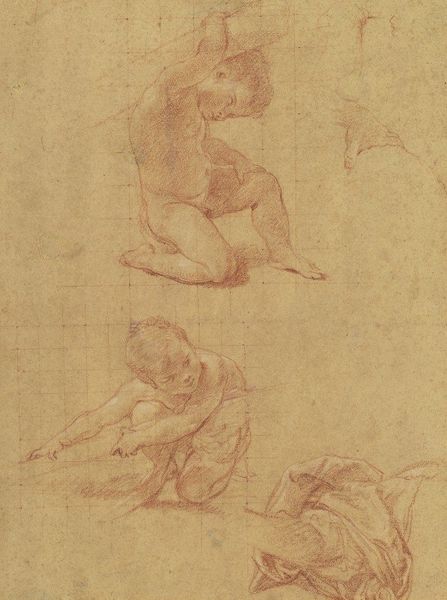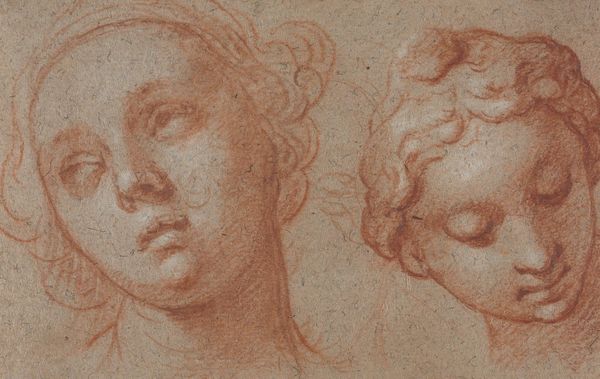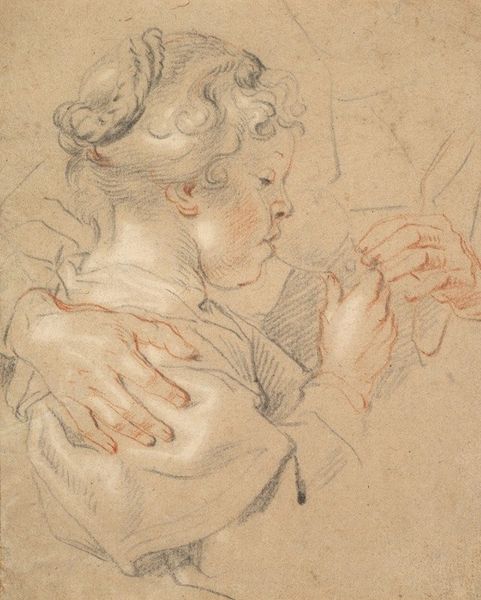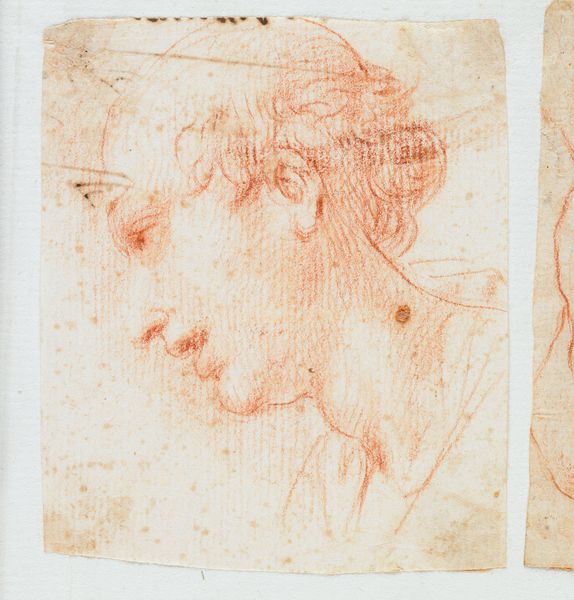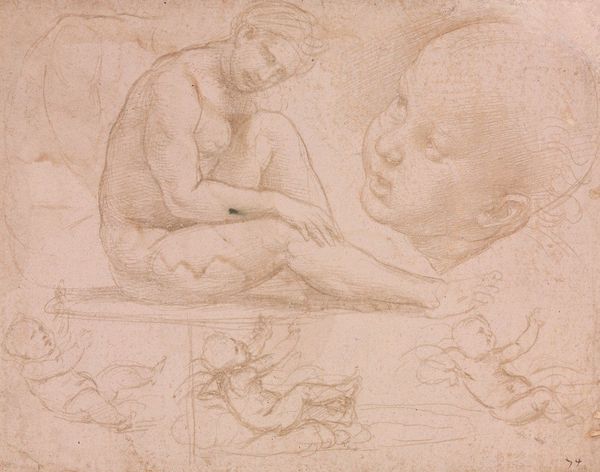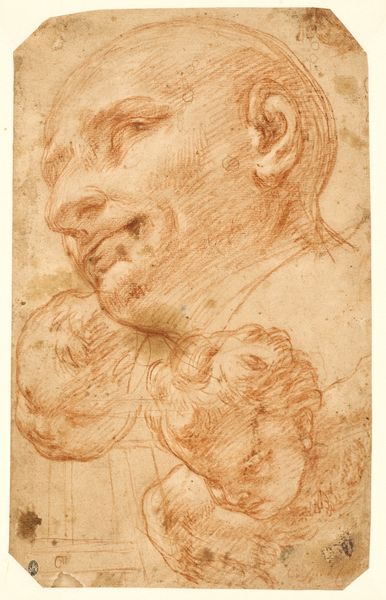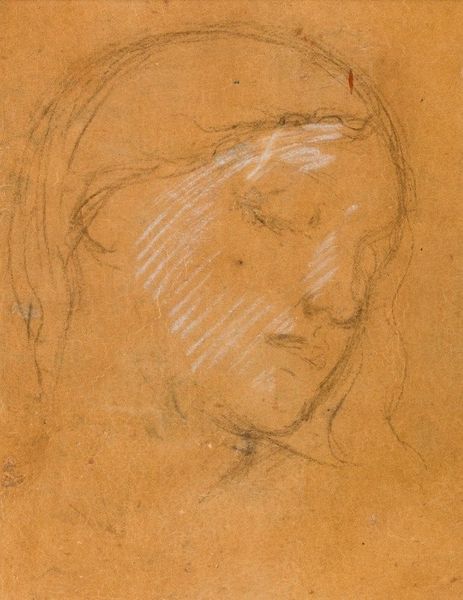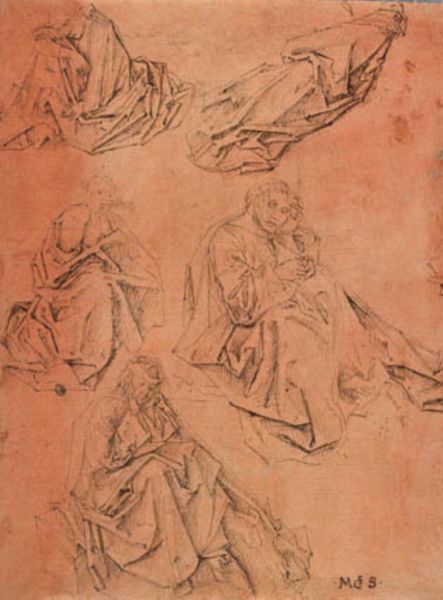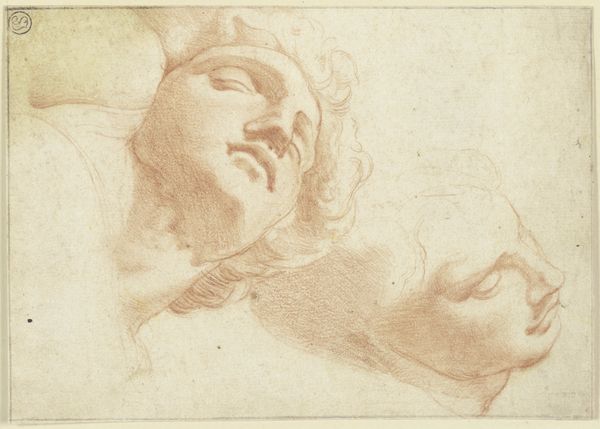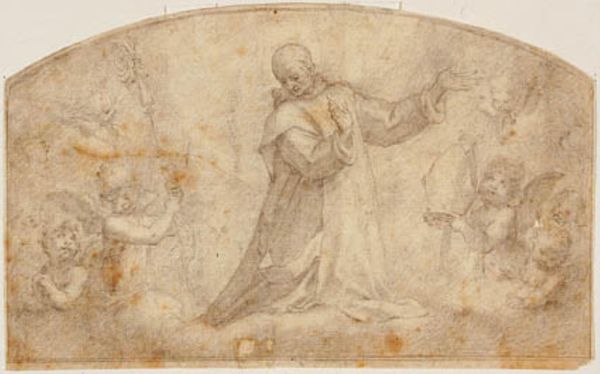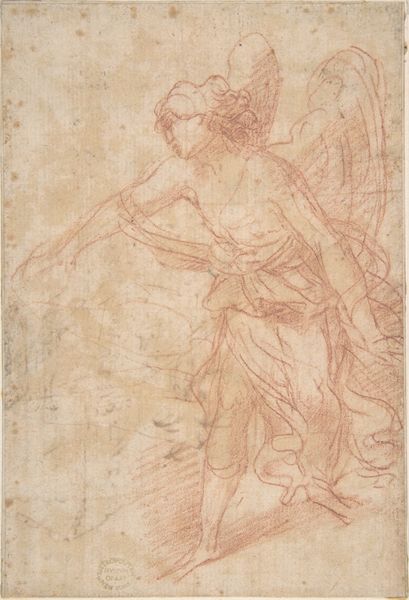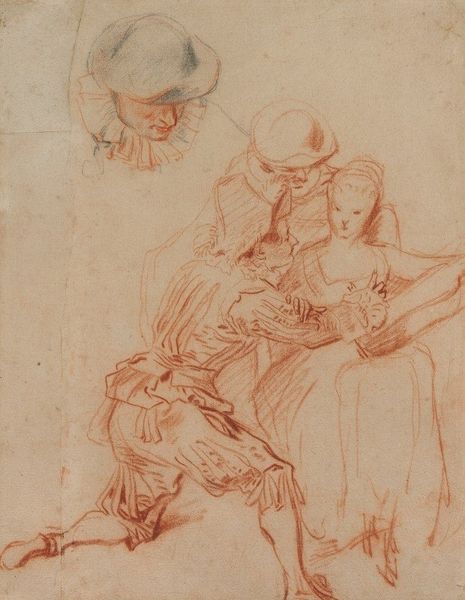
drawing, dry-media
#
portrait
#
drawing
#
self-portrait
#
pencil sketch
#
classical-realism
#
charcoal drawing
#
11_renaissance
#
dry-media
#
pencil drawing
#
portrait drawing
#
academic-art
Copyright: Public Domain: Artvee
Curator: We're looking at "Tête de jeune garçon, études subsidiaires de mains et visage", a drawing attributed to Pompeo Batoni. The title translates to "Head of a young boy, subsidiary studies of hands and face". Editor: My immediate impression is one of serene observation. The warm, almost sepia tones create an intimate atmosphere, like we're peering into a private moment of study. Curator: It's rendered in what looks like red chalk or sanguine, a common medium for preparatory sketches in the academic tradition. Batoni, known for his portraits, would have likely used studies like this to refine his understanding of anatomy and expression. Editor: Exactly. But I see more than mere anatomical study. There's a definite engagement with the sitter. The way the light catches the boy’s profile hints at a delicate introspection, and how does the composition interact with the social expectations imposed onto children at that historical moment? It also highlights the labour and material associated with this type of training available mostly to affluent male painters. Curator: That's interesting. Considering Batoni's place within the Grand Tour circuit, his workshop churned out images appealing to the tastes and self-perceptions of wealthy, largely British tourists. The cultivation of male beauty and its associations with ancient ideals would’ve held particular currency for his clientele. These types of images reinforced notions of refinement and social position through access to high culture. Editor: I agree. Moreover, let's not forget how art academies served as gatekeepers. Works like this reflect institutional biases inherent to that context, mostly around gender. Think about how the artist navigates between objective observation and idealized representation. And what those ideals were at the time, and who were they meant to exclude or invisibilize. Curator: That said, you could also see this sheet of sketches as a place for Batoni to explore. The slight variations in the angles of the face and the positions of the hands suggest an active and investigative approach, maybe without a clear end product in mind. It can also provide a space where artists may have experienced moments of doubt as well, which humanizes them despite the political implications of these images. Editor: That's precisely the tension, isn't it? The piece is both a reflection of entrenched societal structures and a potential space of artistic exploration. For me, it underscores the enduring relevance of questioning these artistic legacies. Curator: Agreed. Looking closer always yields new layers. Editor: It does indeed, making us reflect on who gets remembered, how, and why.
Comments
No comments
Be the first to comment and join the conversation on the ultimate creative platform.
